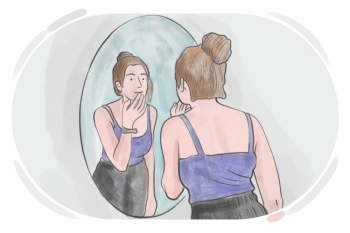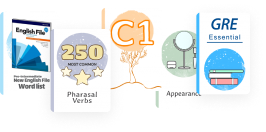Reflexivpronomen Für Anfänger
Erfahre, wie du Reflexivpronomen wie "myself", "yourself" und "themselves" richtig verwendest. Sie sind wichtig, wenn Subjekt und Objekt gleich sind. Die Lektion bietet Beispiele und Übungen für bessere Verständlichkeit.

Was sind Reflexivpronomen?
Reflexivpronomen beziehen sich auf das Subjekt des Satzes oder Teilsatzes. Sie werden verwendet, wenn das Subjekt und das Objekt eines Satzes dieselbe Person oder dasselbe Ding sind.
Englische Reflexivpronomen
Es gibt acht Reflexivpronomen im Englischen:
Subjektpronomen | Reflexivpronomen |
|---|---|
I (ich) | myself (mich/mir) |
you (du) | yourself (dich/dir) |
he (er) | himself (sich) |
she (sie) | herself (sich) |
it (es) | itself (sich) |
we (wir) | ourselves (uns) |
you (ihr) | yourselves (euch) |
they (sie) | themselves (sich) |
Schauen Sie sich nun einige Beispiele an:
I saw myself in the mirror.
Ich sah mich im Spiegel.
She cut herself last night.
Sie hat sich letzte Nacht geschnitten.
We took a picture of ourselves.
Wir haben ein Foto von uns gemacht.
Wann verwendet man Reflexivpronomen?
Reflexivpronomen werden verwendet, wenn das Subjekt und das Objekt des Verbs dieselbe Person sind. Zum Beispiel:
Introduce yourself to the new neighbors.
Stell dich den neuen Nachbarn vor.
They look at themselves in the mirror.
Sie sehen sich im Spiegel an.
Quiz:
Which sentence uses the correct reflexive pronoun?
I saw yourselves in the mirror.
She looked at herself in the mirror.
We talked to yourself after class.
They helped herself with the project.
Sort the following words to form a correct sentence:
Match each subject with the correct reflexive pronoun
Complete the sentence with the correct reflexive pronoun:
She introduced
to the new students.
I looked at
in the mirror this morning.
He cut
while cooking dinner.
Fill in the table with the correct reflexive pronouns for each noun:
| Noun | Reflexive Pronouns |
|---|---|
John | |
the children | |
Mary | |
the dog | |
me and my family |
Kommentare
(0)